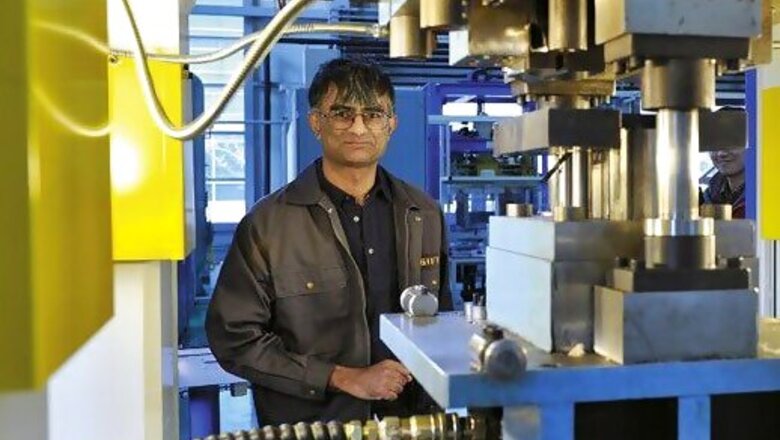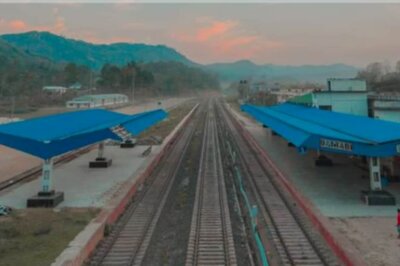
views
Every year, 17 million people use the Channel Tunnel, the undersea rail network that connects the United Kingdom with north of France. Considered as one of the Seven Wonders of the modern world, 37.9 km of the 50.5 km-long tunnel passes under the sea. To make sure that each and every part of this sophisticated transport network is as safe as possible, authorities recently opted for a new kind of steel that is used to lay the tracks.
Unlike the earlier version, the new steel doesn't have any carbide and is rich in silicon. In other words, while the new steel is hard and wear-resistant, it is not brittle like the earlier steel, making it much safer. The authorities had tested the new steel for 15 years before clearing it.
For Harry Bhadeshia, who led the team that along with British Steel (that eventually became Corus and later acquired by Tata Steel) invented the steel, this only reiterated his belief that the metal has an "unbelievable variety that remains unseen by the outside world."
This is not the only invention that has come out of the lab of the renowned metallurgy scientist and Tata Steel Professor of Metallurgy at the University of Cambridge in his 40-year research career.
From making better steel pipes to transport oil to coming out with a 'unthinkable' and 'super strong' steel that is now being tested in defence and aviation sectors, Bhadeshia's research has invoked serious debates and produced inventions worth millions of dollars, and much more in impact.
Looking back, it only seemed natural that Bhadeshia would choose a career in research. Growing up in Kenya, where he was born to his Indian parents, one of the fondest memories for Bhadeshia was a "small laboratory with a chemistry set, a plastic skeleton, a microscope, a self-assembly radio set and a variety of electrical items" that his parents had helped to set up.
By the time he finished his schooling in 1970, the family was forced to leave Kenya and move to London. This was when 'fate,' as Bhadeshia's friends term it, came into play. Keen to contribute to his family, the teenager landed a job at a metallurgical lab owned by the British Oxygen Company.
In the lab, he got hooked to the "excitement and responsibility" that came in testing tiny samples, whose results were crucial in building large plants. .
The fascination turned into a passion when Bhadeshia explored the world of steel, which was complicated and at the same time had an "unbelievable variety" that remains unseen by the world at large.
Explains Bhadeshia: "Every year, 1.3 billion tonnes of steel is produced, but there is no need for the outside world to understand it... it is a product made in an extremely sophisticated and controlled environment... it is so reliable that no one needs to worry about it. On the other hand, everyone needs to worry about the operating software in their computers as these are not very well developed products!"
In 1979, when Bhadeshia published his doctorate thesis at Cambridge, an old, but still simmering debate was ignited once again. Since the 1930s, the metallurgy community had been debating on the process that leads to "phase transformation" of steel.
Bhadeshia showed that one of the phases in steel, bainite, is formed through a process of "diffusionless transformation" and not by "diffusional transformation."
Says Bhadeshia's former Cambridge student SB Singh, who is now professor, Department of Metallurgical and Materials Engineering at IIT Kharagpur: "His work settled the debate. Sure, there are still some who would think otherwise, but even my studies thereafter have vindicated Professor Bhadeshia's thesis."

















Comments
0 comment